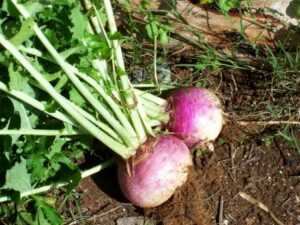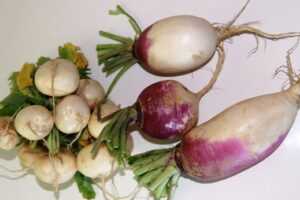the end of the month again…
At the end of this week, we will bill your credit cards for the December vegetables, fruits and other products ordered through Chubeza, including vegetables for next Monday, December 31. Please keep in mind that as the billing will take place towards the end of the week and before Monday deliveries, kindly inform us right away of any changes needed for next Monday’s boxes. Last minute changes will be balanced next month.
Note that the month of December had five Mondays and four Wednesdays.
We would like to remind you that you are now able to view your billing history in our Internet-based order system. It’s easy now, simply click the new tab “דוח הזמנות ותשלומים” where the history of your payments and purchases is clearly displayed.
Keep in mind that it takes two to three days to update your payments, but if you receive an invoice/receipt to your email, you know the billing was successful.
_________________________________________________________________
TURNIP TIME!
Over the past few weeks, you have been graced by the visit of the dynamite duo of daikon or turnip. We wrote about the daring daikon a few weeks ago. Today his purple girlfriend, Miss Turnip, will be dominating the stage.
A fairy tale turnip
As a child, we had an old storybook with innocent, old-fashioned drawings in light colors. I don’t remember the plot of any of the stories, but I do recall that one was about a turnip. The children in the story sowed a turnip in their yard, or ate it for lunch or something along those lines. I remember we kids being astonished: what is a turnip? We imagined it to be an exotic European vegetable that only grows in harsh winters (maybe the children in the illustrations were wearing coats?), and with a heavenly taste (the children seemed so happy from their delectable meal).
In Israeli reality, the turnip rates very minimal acclaim. It is considered to be a boring, tasteless vegetable. But in stories, it is highly regarded.
The well-known “Eliezer V’HaGezer” story is originally the tale of a huge turnip that required the cooperation of all members of the household to pull it out of the ground. The original Jack O’Lantern was an Irish drunkard who scooped out the insides of a turnip and placed a candle inside to act as a lantern.
A Grimm Brothers tale tells of two brothers, one rich, one poor. The poor brother grows a huge turnip in his yard, and because he can’t figure out what to do with it, brings it to the king who rewards him with a huge fortune of gold. When the rich brother hears, he comes to the king with his own gift: gold and horses. The king is enthralled by this gift, and in thanks, sends the rich brother home with his gift: a huge turnip.
But beyond fairy tales, the turnip deserves real respect for being a truly great vegetable. True, it’s probably underrated because its mild taste is less pronounced than other vegetables. Which is unfortunate, because I fear we’re getting used to the strong tastes of over-seasoning, brought to us by fast food and nosh that bombard us with overbearing flavors. We then miss out on the more gentle savors, the ones that don’t grab the stage and holler.
The modest turnip is an ancient cultivated crop, known in Greece, Rome, China and ancient Egypt. Its origins are in China, central Asia and the Near East. In Israel, the turnip was grown during the times of the Mishnah, where it is mentioned as a popular garden vegetable. It belongs to the Cruciferae family, a cousin to cabbage, broccoli, cauliflower, kohlrabi, arugula mustard, horseradish, radishes and others. Like the rest of the family, the turnip favors a cold winter climate that slows down the plant’s breathing and raises the quantity of the carbohydrate reserve, a process that improves its taste. Variable, unstable conditions will produce a woody root and strong flavor, and the turnip turns bitter if the weather is too hot or dry. Perhaps that’s the reason for the Israeli turnip being a true winter vegetable. The plant develops a dense root with a crown of leaves on its head, similar to the radish. There are many varieties of turnip: spherical, round, oblate and skewered, and their colors range from pink to purple to yellow.
In Israel, the root is the edible part, but in the Far East and southern United States it’s the greens that are eaten, with some species specially developed for their leaves. The root is eaten raw, cooked or pickled, and the leaves are cooked like spinach. There are countries that produce oil from the seeds. Somewhere in cyberspace I read about a Canadian who married a southern American, and one day they decided to have turnip for dinner. At the supermarket he placed a turnip root into his cart, to his wife’s astonishment. She was used to giving the root to feed pigs, and demanded the greens instead. He declared that as far as he’s concerned, the turnip IS the root, and greens are animal fodder. Sadly, neither ever touched a turnip again. The moral: both greens and root can be eaten.
So indulge yourself with turnips in everything from soup to meat dishes to cholent. Use the turnip as you would a carrot (crusted, steamed with butter, glazed) or a potato (chips, pureed). Combine long, thin pieces of raw turnip (made with a peeler) in a vegetable salad. Or pickle it for two days, without pre-cooking, in a sweet and sour liquid consisting of a cup of plain vinegar, a cup of water and a cup of sugar boiled together.
The turnip also has medicinal qualities. According to Nissim Crispil, it relieves coughing and hoarseness, mucus buildup and breathing problems. In natural medicine, quaffing turnip juice is said to improve your mood. It is also beneficial for the kidneys. Turnip roots contains calcium and potassium; drinking turnip-green juice aids in neutralizing excess blood acidity, and fortifying bones, hair, fingernails and teeth. Just 500 grams of turnip root will produce a glass of juice beneficial for anemia, arthritis, asthma, disruptions in the menstrual period, bladder obstruction, heart disease, fever, and kidney, liver and lung function. And 500 grams of turnip greens will produce half a glass of juice (one quarter in the morning, a quarter in the evening) to heal a cough, hoarseness and hair loss.
To your good health, and Bon Appétit!
Alon, Bat Ami, Ya’ara and the Chubeza lanterns
_________________________________
WHAT’S IN THIS WEEK’S BOXES?
Monday: Arugula, cauliflower, broccoli, tomatoes, kale, cucumbers, spinach, daikon or turnips, chives or scallions, dill or cilantro, beets (small boxes only)
In the large box, in addition: Celeriac, radishes, potatoes, leeks
Wednesday: broccoli, kohlrabi or turnips, potatoes, leek or scallions, small radishes or daikon radish, parsley, cucumbers, lettuce, Swiss chard, spinach or arugula, tomatoes.
In the large box, in addition: carrots, celery or celeriac, beets or eggplants
And there’s more! You can add to your basket a wide, delectable range of additional products from fine small producers: granola and cookies, flour, sprouts, goat dairies, fruits, honey, crackers, probiotic foods, dried fruits and leathers, olive oil and bakery products too! You can learn more about each producer on the Chubeza website. On our order system there’s a detailed listing of the products and their cost, you can make an order online now!
______________________________
Turnip Recipes:



